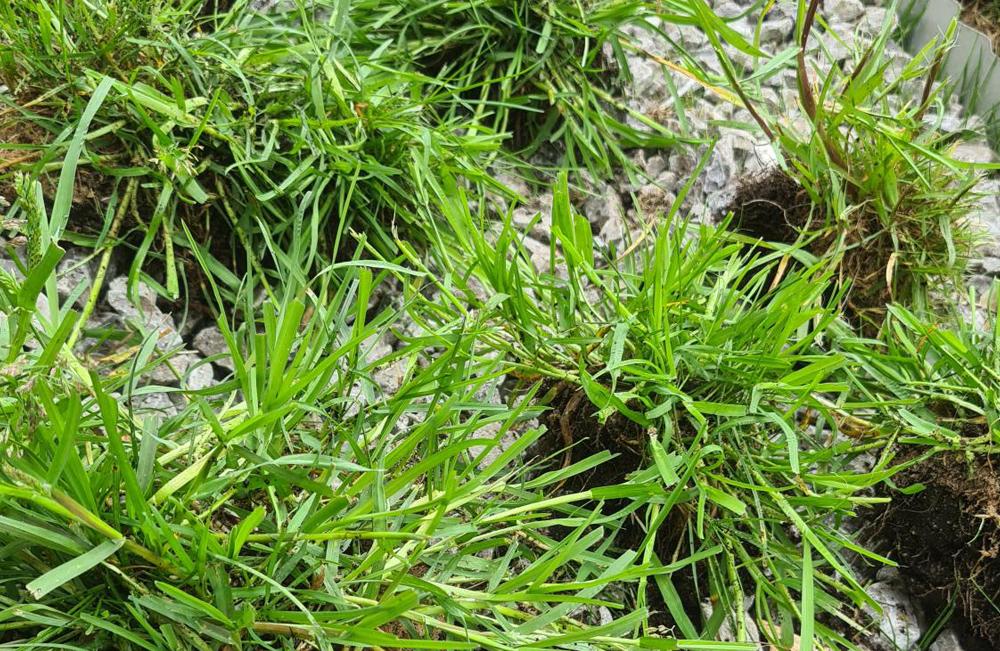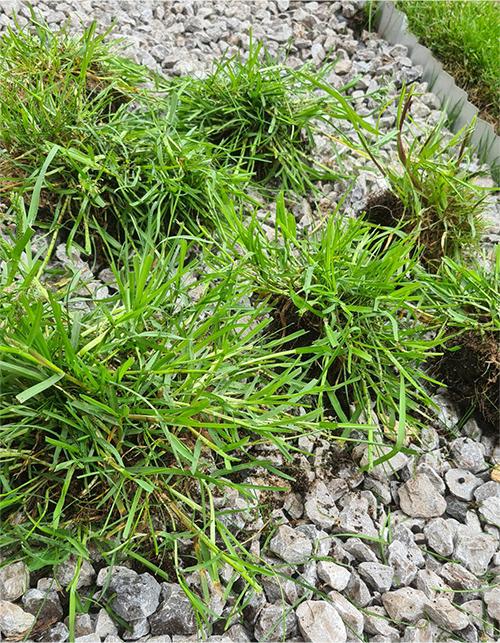
Created By
Matt Adams
Updated On
- March 1, 2024
Get FREE Exclusive Access
Keep your lawn pristine with exclusive tips, offers and insights that I only share with my private subscribers.
Latest Posts
Coarse Grasses in lawns – How to get rid of it
- By Matt Adams
- March 1, 2024
Jump to
Get FREE Exclusive Access
Keep your lawn pristine with exclusive tips, offers and insights that I only share with my private subscribers.
The biggest challenge with coarse grass being in the lawn is that it’s very difficult to isolate from other fine-leaved grasses.
That means you can’t spray any selective weed killers because they just won’t do anything.
On the other hand.
If you use full-on weed killers, you’ll kill the grass you want to keep.
So, in this post I’m giving you full insight on how to keep coarse grasses at bay and how to get rid of them once they do appear in your lawn.
I’ll also share a few tips and tricks to save you from doing either of the above. A sure-fired way to disguise them from view.
Firstly, What do coarse grasses look like?
They tend to grow in clumps, have a dark green colour and have quite a different texture to the rest of the lawn.
Some leaves can have a brown-coloured look, which may give your grass a ‘burnt’ feel.
When you look at your grass from afar, you may notice the the lawn has different coloured green levels flowing through it. Of course, this isn’t necessarily bad for the soil.
However, if you’re looking for the perfect stripe effect after mowing, it’s going to hinder that.
POA Annua – the most Common Type
POA Annua is by far the most common type of coarse grass. Like all the others, there’s no selective herbicide that will kill this on its own without killing the grass.
It’s a type of meadowgrass, though it’s not to be confused with rough or smooth stalked meadowgrass, as these are finer grass types that generally do well in shaded areas.

How does it get there in the first place?
Coarse grass is one of the most invasive species of grass. It can grow almost anywhere in virtually any condition. It particularly thrives when there is a bare patch of soil left for a long amount of time.
Can be found in cheap seed mixes
Not only that. It’s sometimes found in cheap seed mixes. If it’s contained in a purchased mix, it’s likely to be the dominant variety. If you ask me, steer clear of cheap seed.
Birds pollinating
Who would have thought it – birds can grow grass for you? I only thought they ate our seed. It’s true though, birds can carry seed and essentially pollinate the soil with the different grass varieties.
Contaminated Loam mixtures
If you buy a loam mixture as a top dressing from the garden centre. Or anywhere for that matter, there’s a chance it could be contaminated. It’s virtually impossible to tell you which will or won’t be contaminated.
What I would say is always buy specialist top dressing or specialist lawn dressing. Don’t just buy any old compost if you want to be sure.
These specialist products have been filtered and washed to remove as much contamination as possible. Usually with an understanding that a nice looking lawn is paramount to the people using them.
Strong Winter Growth
Coarse grasses tend to withstand freezing weather better than fine ones. Therefore, they are much more likely to continue growing over the winter than most other types. This means you may find that when you step outside in late Feb early March, you’ll notice more coarse grass than usual.
One of the best ways to eliminate this is to keep up with your Autumn feeding programme and ideally your Winter feeding routine too.
How to Control Coarse Grasses
By far, the best way to minimise invasion from coarse grasses is to have a robust year-round lawn maintenance plan. As you can’t use any form of herbicide or weed killer against them unless you want to start from scratch – so by far the best method is prevention.
Overseeding
Scarify and Overseed with fine grasses every year. Of course we all want to do it in the Spring so that the grass looks great for the main growing season. However an Autumn overseed can help a lot towards fighting off the coarse grasses during the freezing Winter months.
Feeding the grass
By applying lawn feed, at least seasonally, you’ll be able to keep the fine grasses strong and dominant.
Seed immediately after pulling them out
Rest assured, I’ve spent many hours lying on the ground pulling out (what I think is) coarse grass that shouldn’t be there.
If you do the same, then you should apply fine fescue seed or rye grass fast growing seed as soon as possible. That way you’ll massively reduce the amount of time that coarse grass has to take over that area.
Rake the coarse grass areas before mowing
If you do have specific areas that are covered with coarse grass, you should rake some of it out before mowing.
If this leaves a patch, simply apply a small amount of fine grass seed after finishing mowing. Remember though, don’t mow too low as you might make the grass look brown.
Remove it manually (with a spade fork)
If you feel the coarse grass is just getting too much, then it might be best to start again just in that area. I don’t recommend doing this in large areas. Just on a small patch that’s easily manageable.
The best time to do this is in early Autumn September/October. That’s because fine grasses thrive more at this time of year. Whereas coarse grasses thrive in Winter & Spring.
Adjust the pH (but not too much)
One thing these thick clumps of coarse grass don’t like is when soil is too acidic. So, by lowering the pH you could help the fine bladed ones out compete the thick bladed. However, grass grows best in a pH of 7. So, if you do want to change the pH don’t go too far the other way.
Avoid, adding things like Lime or calcified seaweed because these will increase the ph to an alkaline which is favoured by these types of grasses.
Accepting coarse grasses as a natural phenomenon
By doing this, you will allow for a stress free Spring and Summer because you can just accept them as being part of your natural lawn.
The best way to do this is to keep the grass that little bit longer. Usually by mowing no lower than setting 4 on a rotary.
So, if you want to mow the lawn super short, this might not be the best option for you. However, if you’re happy for a slightly longer one, you should definitely consider ignoring the coarse grass types that make into your lawn area.
Still, of course do your overseed and seasonal feeds, and eventually the nicer ones will take over but in the meantime, try not to take notice of them while they are there.
A Final Word
Tackling coarse grass in your lawn requires more prevention than control due to its resilient nature and the challenges posed by conventional weed control methods. Selective weed killers are ineffective, and full-on weed killers risk harming the desirable grass. Identifying coarse grass’s distinct appearance, growing in clumps, dark green colour, and unique texture, is crucial for effective prevention/removal.
Understanding the sources of invasion, such as cheap seed mixes, bird pollination, and contaminated loam mixtures, empowers you to make informed choices in maintaining a healthy lawn. Coarse grass’s resistance to freezing weather makes it a persistent winter and early Spring grower.

This Post Has 2 Comments
If it grows during winter and early spring, are there not times of the year when we can weedkill it without too severely damaging the fine grass?
Sure, you could use a selective weed killer Selective Lawn Weed Killer – Kills Weeds Not Lawns